
|  |

|  |
 e-mail: khokar1960@gmail.com Triple A January 21, 2023 A book, a film and a conversation by Annette Leday from Paris, then a book and talk on Ram Gopal by Ajay Sinha from a state in the US of A whose capital is Baaasttunn (Boston). That was the highlight of the beginning of the dance calendar here in Bangalore. In the Spring of 1938, dancer Ram Gopal, the legendary dancer of India and a happening American photographer Carl Van Vechten came together for a photoshoot in New York City. With a German... camera- Leica, which was then a novelty. It had replaced the box camera then prevalent in America made by Kodak. While Germany was hardly popular in Europe in that period, America welcomed inventions. Leica thus was a very spiffy camera, full of levers and levels, with flexi lenses (it was originally and after all a company making optical and microscopic lenses). 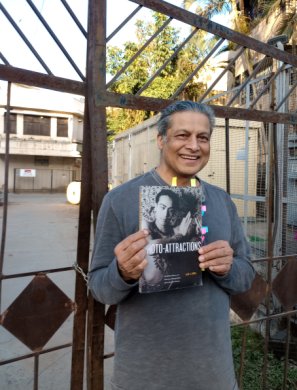 So we were at Carl Van Vechten or CVV. He positioned his work between formalism of the 1920s to the modernists of later years. He absorbed much from both. His subjects were either subjects of Vanity Fair or Conde Nast group of publications anyway. "He didn't fit in any one mould or canons of art or fashion photography ". His was more the ouvre of an amateur photographer belonging to what Ajay Sinha calls "The Leica Moment". Remember the famous Kodak ad? The Kodak Moment, from the previous century? When CVV picked up Leica, he picked up what Sinha calls the "visual aesthetic" broadly associated with the camera. The large images cache that was produced by him on Ram is considered the earliest visual record of the legendary dancer, who made Indian classical dances popular worldwide, initially. If it is Uday Shankar who made Indian ballet type of dance reach out with group works, it was Ram Gopal who with his solos garnered international support for Indian classical forms, though the West - out of cultural ignorance or superiority - termed it Oriental or exotic Indian dances! West was "illiterate" or not interested or sufficiently informed about things Indian when India was still a colony. These photos now become a study and book called PHOTO - ATTRACTIONS by Ajay Sinha. The photos by CVV are most sought-after now because he understood and undertook most subjects in his studio and categorised them meticulously under such categories as: Negroes, Authors, Actors, Painters, Photographers, Musicians, Dancers, Athletes, Chinese. The first and last titles could today be a strict no no nomenclature. The categories are idiosyncratic, and troubling says Ajay Sinha on page 32. They indicate an impersonal objectification of the sitters and worse, a white, American photographer's gaze on his racialized subjects, adds Sinha. The book is objective and fair to all sides, black, white, brown and sepia tones! Ram Gopal was my "grandfather" too. He "adopted" my mother as his daughter and was the first to take and promote her art in Europe in the 1960s. Ram was a celebrator of art and not insecure, as most dancers can be. He included bright talents of the times in his group: Mrinalini Sarabhai, Kumudini Lakhia, my mother M.K.Saroja - then a child of nine(!) who Ram Gopal platformed in Lahore and London. Lahore was the cultural capital of north India, not Delhi, which was a village of just 4 lakh inhabitants in 1947, when India became independent. M.K.Saroja as a child star was a novelty on stage to be seen those days. She was called Baby Saroja. Imagine in a group of grown-ups, putting a nine-year-old on stage those days. Mother, of course, was not allowed to travel alone by her rather conservative Madrasi family, so her father or mother were in tow with an ayah in attendance to make rasam and sambar on the tour! As vegetarians they could not eat and drink all that Ram could! He was international even then! Ram's troupe was actually the first full integration of South Indian regions (there were no states those days, as we have now, just kingdoms of Mysore or Travancore or Presidencies of Madras and Bombay). Ram thus attempted and created the first dance union of Southern forms: he hailed from Bangalore; Mrinalini Amma from Kerala and my mother from Madras (the M in her initial denotes that). To this, add musicians from Andhra (then under Madras Presidency) and the southern states or kingdoms were well represented, completely so and never again. They actually carried the idli grinding stone pestle, all but 50kg on their travels! Ship voyages warranted any amount of baggage. The story of the Maharaja of Jaipur carrying his own Ganga jal water (just 4000 litres) as his drinking water, in huge silver vessels of the height of human beings, to London in 1902 when he was invited to the Coronation of the King and to meet the Queen, he held that he could not partake of water even in his "sister's" house, so carried his own, is all too well known. 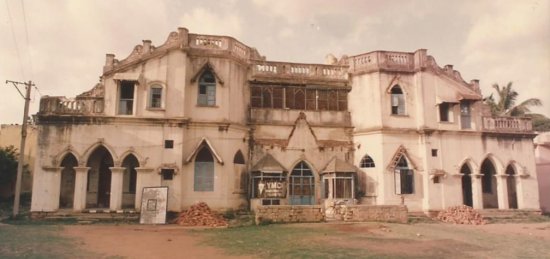 Ram Gopal's house Ram was a maharaja by disposition, so travelled with 50 folks in his dance company, music instruments, idli stone, et al with dozens of trunks for costumes. Dance history is made of such delicious and delectable ingredients, what we doing Master Chef shows now in 2023!? So, these photographs taken in 1938, in CVV's studio in NYC - Ram was so exotic looking (high cheeked bones inherited from his Burmese mother and muscular Rajput height from his barrister father) and therefore, much photographed wherever he went because he was oh! So divine looking and different - have now entered Ajay Sinha's book detailing the life and times of Ram Gopal. Writer Sinha is a product of MSU, Baroda and teaches art history at Mt. Holyoke College in South Hadley, Massachusetts. He has earlier books on Bollywood and one on architects. He is a jovial but in-depth art scholar from where else but the USA, a country that encourages research, supports it and values history. Its universities are amazing. Unknown little state colleges and universities are also way above our best universities by most yardsticks. Therefore, it is refreshing to see Sinha's tome. His book leaves me a tad sad, rather upset as to why couldn't this be undertaken in India? It is done by an Indian on an Indian dance legend but in red Indian territory! Kudos to Rutgers University Press for publishing it even if the cover warps up. Acid-free paper and oil-free, all fine, but a book is meant to curl up with, not get curled! The book is also a lesson in how to write dance photo histories. Each page is anointed with cross references and well thought-out. Curating is not an easy job and Sinha succeeds admirably in it. 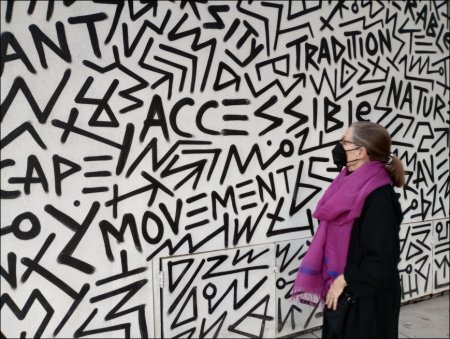 Bangalore’s Museum of Art and Photography To me, the book is full of historical characters - like the Polish critic Aleksandra Janta or Mercedes da Costa - flying out of the pages. Ram had written about being deserted by Janta in Java leg of his tour, in his rather creative autobiography, Rhythms in Heavens. "Princely modernity " as described in Ajay Sinha's PHOTO-ATTRACTIONS, wherein he shares how an illusion of all is oppulently well under British Raj feeling is created by Ram writing his own story. Ram loved filligreeing! Narcissism is not unknown to dancers, Indian or Western. Page 57 has that photo idea of Ted Shawn posing as Shiva Nataraja in Mamallapuram and the actual wooden frame lies in Jacob's Pillow archives but shown on page 59 at an exhibition of the same in Williams College of Art Museum, August 11, 2018. The notes on pages 60-61 are worth grasping as so much layered history is encapsulated here. God, this is not ONE book but many in one. It is a monumental work; Ajay Sinha may not even be aware of the phenomenal job he has done! On page 77, snippets of the other side of the midnight story come to fore. On the same page Ram's androgynous body is being talked about in Cobra dance type items. Parallels are also drawn on Madhavan's masculine Kathakali as against Ram's "shockingly different." Having known Ram Gopal personally and closely for 50 years (and he often stayed with mother and father at their homes in Delhi, Madras or Bangalore), I can say he was never namby pamby or even androgynous. He was born to look like a temple sculpture come alive. I saw him at railway stations or airports and I could see the effect he had on most the minute he entered a room or hall. Some have it, this gift of presence. Very few dancers have it even star actors often don't have it. Ram also loved attention and he would dress up to get it, even while going for a dosa to a neighborhood eatery. Once a star, always a star. Page 62-63 should be a template for future books on BN; that's brevity for Bharatanatyam. So much information is contained in these two pages- from how Ram positioned Indian classical dance as mostly a tradition of and by men - that it makes all female dancers redundant or just dasi attam performed by courtesans and prostitutes. Deja Vu! I'm like going back exactly a 100 years ago when in 1922 Anna Pavlova, on a visit to India with her equally renowned hubby Victor Dandre said: We did not see any traces of famed Indian dances except for the Nautch. Page 66 encases Hari Krishnan, another sensitive scholar of Indian dance, teaching at the Wesleyan University, USA dissecting the Devadasi tradition vis-a-vis the nattuvanars: How men were (should read men only) female impersonators in Bhagavata Mela Natakam. Pronounced with a double AA as bhaagavata. The book is full of lateral information and a must read for all students and practitioners of Indian dances. Again from page 166 onwards, the focus by Hari Krishnan is on "celluloid classicism" or dancing for the films. With clarity, he displays the displacement of the Devadasis and how cinema contributed significantly to this process. The intermediality of dance and film, "is often underplayed by historians of Indian dance and performers alike but must be taken seriously". Nataraja as a central figure in Indian dance, especially BN, is platformed too. Ananda Coomaraswamy's essays The Dance of Shiva linked sculpture to dance in an integral way. The connection was always there but modern English writing had not taken note of it in a major way. Astad Deboo always looked to me and sounded like a sad, malcontent character in the 40 years that I’ve known him. He won much acclaim and awards for his artistry, which had no competition all his professional life, but he felt India didn’t understand his art and West had celebrated him first and here too on page 200 questions, "What has Ram done for India?" For him to opine in such a manner is surprising. Ajay Sinha succeeds in helping establish that actually Ram Gopal controlled the camera and not the other way around! Those days to go to West and show Indian dances very few knew of and get top photographers (and later, media in many continents) to promote him was no mean achievement. Ram, more than Uday Shankar, set the discourse for classical dance, despite his own training in most forms being surface level. Good branding and positioning was superb. He was the original ring master and model, rolled into one. Ajay Sinha is courteous and careful in not spelling out Ram as an exhibitionist that he was, but in India we can. Ram was the first solo male icon and brand ambassador of classical dances of his times. It is in a short B&W film by Ram's neighbour (then a Post office staffer) called Tom D'Aguir, that "we get a clear evidence of Gopal's fascination with the photographic and cinematic media". This film found its way to cartoonist Abu Abraham's artist-daughter Ayesha, who preserved the memory. She is a deep person and talent of Bangalore. It is the first time colour in film is introduced and much sought by even a star like Ram. He actually approached Tom because of his desire to see himself in colour, in photo or screen. Especially the screen. In some ways, the book shows how a qualified art historian, who is sensitive too, can infuse much depth into routine photos taken by a talented photographer of a form, person, country or culture he knew not much about. For him, Negroes or Dancers were just subjects. The most amazing photo I'd pick upon is on page 173, a double exposure of Ram as Nataraja. To watch for yourself much more and read an exceptional document on dance, please get a copy from rutgersuniversitypress.org or Amazon to the rescue! 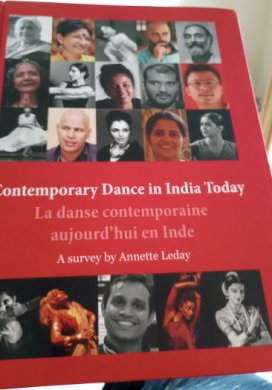 A for Amazon and amazing: Also for Annette Leday of Paris, France. Add A for an academic mind. And finally, A for a first-rate survey of contemporary dance in India today. Surveys are not easy. What set methodology to follow? Then too, in a field as open-ended or vague as CONTEMPORARY dance, what model applies, when most practitioners themselves have no clear definitions? This comes through when one reads this survey. Annette has come up with a masterpiece. She has actually taken note of all that makes for the scene without interpolating too much with her own opinions. She lets the subjects speak for themselves. Annette Leday came to India in the mid nineteen seventies and trained initially in basics of BN; then realised Kathakali was her calling and spent the next decade learning it and having attained proficiency, decided to investigate with the form. Her quest was to "feed on Kathakali body techniques but distinguish itself from the original form." This line alone shows an attitude towards reasoning (French, no!) with intellect and knowledge base, used for explorations. This then led to a decade-long journey into meeting other practitioners and evolving her own works, which through her company premiered Cinderella Reborn in no less a space than Shakespeare's Globe Theatre. That was then, say 20 years ago. In 2023, post-Covid, she brought to India, in a five-city tour, sponsored by promoters Prakriti Foundation of Chennai and Ambassade de France, a book-reading gathering where first a film was shown, shot by Annette Leday herself - with superb light and textures- edited by an ace film editing talent Cyrille Larrieu who has worked in Peru and Pune. A director, globe-trotter and cameraman, he had come in the project only at the editing stage and left a seamless stamp. What is contemporary in Indian dance was being tabled by this survey she had compiled over 4 years of research (2 became 4 due to Covid) thanks to a grant by CND (Centre National de la Paris) and India Foundation for the Arts with a host of others like Institut Francais and local bodies in each city and stars of the form in attendance. The subject itself is not easy. Till date, there are no clear definitions even by the practitioners of the form. The opening page has quotes by three voices in the field, reading which shows how three individuals themselves working in this field of contemporary have no clear definition to offer! See photo to understand what I'm stating. Then the survey - like all good foreigners do and Indians rarely do - is putting a map of the country, where one can realise that just four Southern states make for one France! Population and talent wise if not size. Maps show lay readers, scale and size and idea of what the author or surveyor is talking about. This page is under the caption Itinerary of the Survey. Smart and wise to state that in preamble. Contents and preface follow and then acknowledgements. Annette Leday follows protocols and has a refined approach to this whole world. She doesn't dominate or pontificate, she just shares and states. Her methodology is worth emulating, as it shows sensitive and practical field work with strong practice foundation in dance. So, hers is no armchair writing but a very mature, deep and easy to fathom read. She just states facts and lets the reader decide. No judgemental air, NOTHING of the "imperial West talking down to former colonies". In fact, people like Annette Leday are more Indian than many Indians themselves! They have kept both identities and seen arts as a bridge to cross not fight. Wish the original colonists had some cultural content or advisors; history would be different. 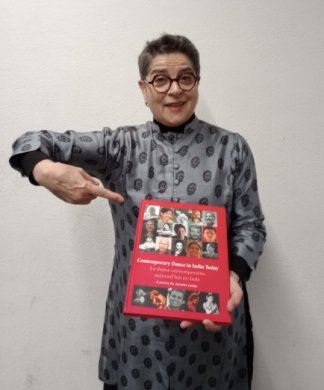 Annette Leday with book The first chapter is Historical Markers, and as a dance historian, this interests me much, as she lays bare the canvass and then fills it up with her colours. She starts with Mystifications where history of India and its religious practices are briefly mentioned, then leads directly to an independent India and coming up of national art institutions - The SNA and others like Kalamandalam, Kalakshetra, Santiniketan (most add an H that's not part of the original spelling; a common mistake). Two quotes shared from India's top dance scholar, archivist and pioneering historian late Mohan Khokar, show where dance stood in the 1920s as seen by dance greats of West who came to India then, like Anna Pavlova and Ted Shawn. Next, she has a paragraph on each of the six pioneers beginning with Uday Shankar and ending with Astad Deboo. Actually, Uttara Asha Coorlawala preceded Astad by a decade and can truly be called a pioneer. Such lists are never fool proof. Is Ram Gopal a classical dancer or "oriental"? How is Mrinalini Sarabhai in this list and not Gopinath or Birju Maharaj or A,B or C? Then too, pioneers of what? Using classical forms for reinvention or making the art of the solo, a group art? Kumudini Lakhia spelt everywhere as Lakhya would perhaps laugh it off, as one sees her doing in the film when she says, "I was tired of seeing stories of gods in heavens and I wanted to come down to earth!" Chapter Two states who all, in each state or city were the part of this survey. It is very comprehensive and nearly anybody who is somebody is mentioned in each city. How come Madhu Nataraj of Bangalore finds no mention? Terence Lewis and his work gets detailed mention, but not Shiamak Davar. Odisha or Odishi is given a complete go by, while remnants of what remains of Nrityagram, finds prominent mention. Chapter Three starts off with TRYING TO DEFINE a rough classification of contemporary dance in India. So, we have the "Neo -Classicists" or Classics. They are the ones in intermediary space, the Anitas, Malavikas, Kumudinis, Mallikas, Aditis, Dakshas ....add three others like Sanjukta Wagh, Vikram Iyengar and Annette herself. Nrityagram is a strange fit here as it mostly is in kumbhakarnan mode for many years now, if not coma and what contemporary work has it done in Orissi? Then there are the Radicalists. "In the 1980s and 1990s, accelerating globalisation encouraged innovation, essentially in urban centres and among artistic elites in contact with international networks." Here, the work and after effects of a phenomenon called Chandralekha (a BN dancer hailing from Gujarat, whose solo career in the form didn't reach far) is tabled with Padmini Chettur and Preethi Athreya as mainstay. Then comes the third classification of "suspended space" which is "at a crossroad between neo-classic and radicalists" and here the work of Jayachandran Pallazhy, Mandeep Raikhy, Annette Leday (has put herself in this list)!), Shobana Jeyasingh, Surjit Nongmeikapam get shared. Then there's the Shunning the Classics lot of Avantika, Anoushka, Deepak, Vanessa. All newcomers to the field. Between dance and theatre lies the world of Maya Krishna Rao, Mallika Taneja, Purnima Yengkokpam. Add Veenapani Chawla's Adishakti and Indianostrum, both of Pondicherry. Bollywood? Why not. It is as relevant and more solvent a proposition as any other genre, if not more. Terence Lewis gets lots of space and attention. The company he keeps or companies shows his success today. Ashley Lobo is platformed but not many a choreographer of Bollywood - Khans, Saroj or Farah. That in itself is another study so maybe Annette Leday left it out. The last classification is interesting as even the French would say! Commercial contemporaries. This means others are not or barely making money. Sisters Madhuri and Mayuri Upadhya are the only ones in India to work with SCALE. 100s of trained dancers on stage for mega shows that pays salaries and food to many dancers. Sapphire of Kolkata does that in their region. For me, as a student of dance history, the new blood was the best part: Surjit Nongmeikapam of Imphal or Vikram Iyengar of Kolkata made sense. There was Parth on stage in namma Bangalore who twirled his mane every time a question was asked of him. In the documentary compilation of mostly snippets of interviews (can't call it a film really, at best a document, a compilation) Astad is as always looking sad and lost and we wish this lone ranger of the 1980s and 1990s a good time in heaven. He dominated the contemporary dance scene for decades as there was no competition. What is Malavika Sarukkai doing in this august assembly? She is not doing anything very different than using BN structure for thematic works, so then by the same yardstick, Leela Samson, Alarmel Valli and many others can figure in this survey. Problem is the field and definitions. Annette's are the first baby steps that were taken long ago by Mohan Khokar, Kapila Vatsyayan, and yours truly, through books and writing as early as five or two decades ago. Contemporary dance is not static. It is forever evolving. If Nrityagram is mentioned, why not Rudraksha in Odisha? Odisha has been given a total miss. So this again raises the Q: Is contemporary dance a genre (Mandeep Raikhy says we need a new word) or an extension of a form, or plain restructuring and or re-orientation? Mallika Sarabhai chose to speak only in French in the film, hence her part of the speech had to be sub-titled for Indian audiences. Anita Ratnam made some direct and relevant points, as did Padmini Chettur. In the end, hearing all voices, some theatre ones like Maya Krishna Rao and others, one felt this is why contemporary dance today in India is so lost in messaging and reaching out. The whole approach sounds rather apologetic or defensive. Mind over matter? Cerebral or mental approach? Leave it to Navtej Singh Johar to sum this conundrum nicely: I'm tired of dance being drowned in ideas. Dance is the body. Just dance on. Jayachandran is not easy to decipher most of the time as he is not an articulate or forceful speaker on stage and in this launch event in Bangalore, his fan club was in attendance asking too many questions of him and not the person of the evening, Annette Leday! Yet, through Jay's mumbling and meandering answers one point however, stayed: Try seeing Bollywood dances without music! Try. Jay's mind and artscape (including his journey from Trichur to Thiruvanmiyur learning BN@Kalakshetra and the Dhananjayans) sounds ordinary but his exposure abroad is deep and one needs scuba gear to reach him. Art patron Ranvir Shah of Chennai, conducted the talk session. The announcer of BIC had a perfect voice to put one to sleep. She droned on, with no inflection in voice, emotion or punctuation. Audiences needs to hear bio data, else it's better not to announce. That the hall gates opened two minutes before start was also not fair to those who brave Bangalore traffic to be on time. We fear metro pillars falling on us when we don't ourselves fall into potholes. The road can cave in too. Only the needy or greedy for art events - the brave - venture out on roads. BIC staff ought to value other people's time, because by being slow and late in opening, a precious ten minutes fell short in end for Q & A. That the survey/ book could not be had for love of money at a launch, also left some disappointed. The book was not available in all other cities the event took place, Ahmedabad, Delhi or... a good opportunity lost for sales. The book is bilingual - English and French. Chapter Four is on themes; Five in creative process; Six on press and critics; Seventh chapter is on teaching and transmission; Eighth on venues and funding (she misses out on IIC and Habitat as venues in Delhi and Neemrana group too - for most meaningful patronage to dance). The last three chapters are on international contacts, perspectives and conclusions. I can't detail all here because then, you won't go get your copy from goyalpublishers@gmail.com The evening was enjoyable because one saw young enthusiasts and old members of the BIC. The survey is a good, wholesome, welcome update on the current and past steps in contemporary dance scene. That an "outsider" did it with neutrality is in a way very welcome because we Indians are too democratic to work in teams. It shows in our tally for Olympic medals! Single digit tally while USA, often gets max. Why? Teamwork. And Annette Leday is no foreigner to India. In fact, India would do itself proud if recognition through an award came her way for her sustained work in Indian dance in last 4o years and for this sensitive (name of one of her earlier works) study leading to this survey and this book. In the end when asked what India has given her, to describe in one word, Annette said: Love. 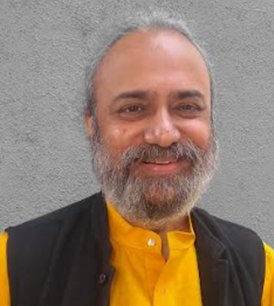 Khokar is a critic and author by profession; historian by education; arts administrator by occupation; archivist by disposition; film compiler through documentation and celebrator of arts and artistes by tradition. More details on attendance-india.com Responses * Ashish has an art in articulating his voice as a historian of dance and his knowledge and prowess shows up in his work. Reading his articles are a beautiful way to relive the moments he has seen or felt. Enjoyed this article … a tad long but not when you realise there is so much to cover and no one worthy should be left out! Well done. - Terence Lewis (Jan 22, 2023) * Fascinating reviews by Ashish Khokar. I learnt such a lot and it's a pleasure to read informed yet honest writing. Too often a desire not to hurt the subject results in a too carefully worded review which one has to decipher! Too often the writer has no real knowledge or can't bring in context in his review. This is fantastic. - Shailaja Khanna (Jan 22, 2023) * Fascinating article. It speaks of a bygone era and rustling brocades and serenading divas including your Amma ji. What a world that was and where have we come to… - Dr.Kumud Diwan (Jan 22, 2023) Post your comments Please provide your name and email id when you use the Anonymous/blog profile to post a comment. All appropriate comments posted with name and email id in the blog will also be featured in the site. |